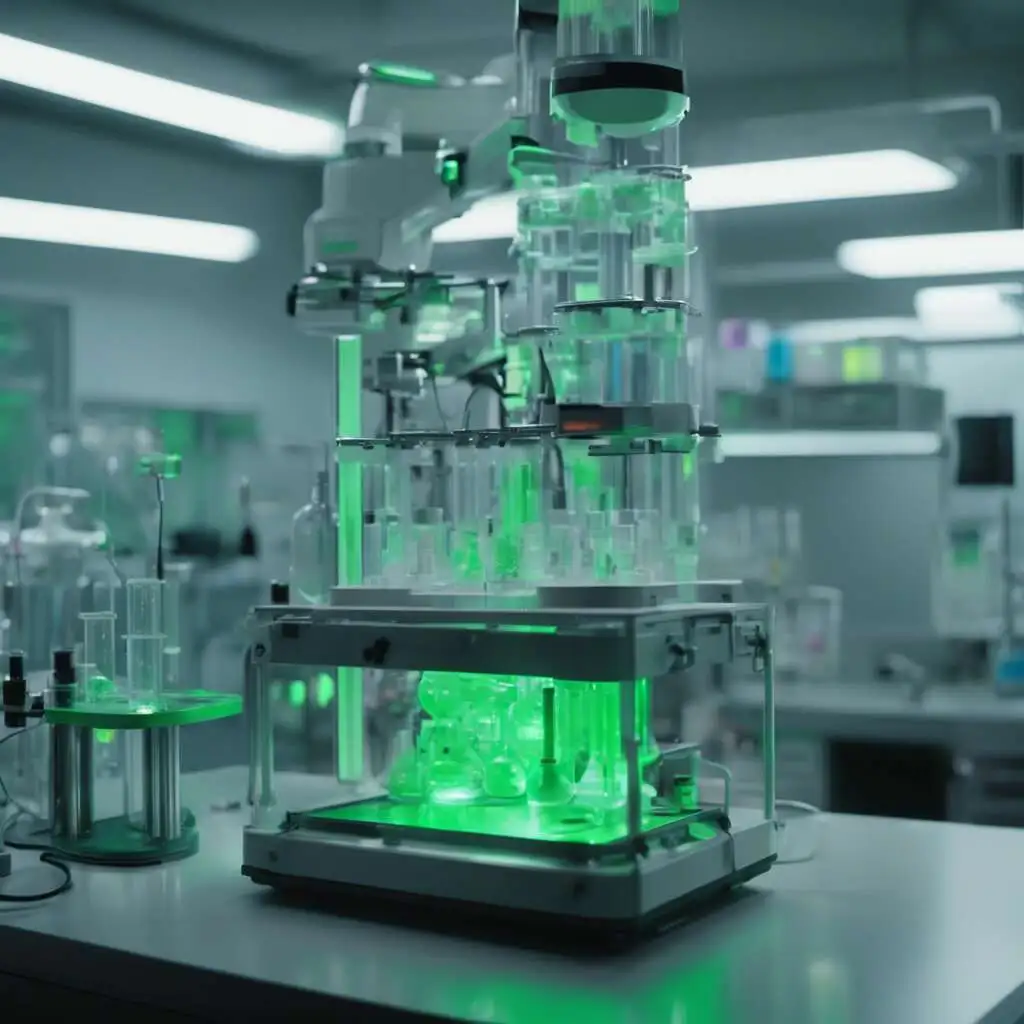I. Introduction
Sodium cyanide, a potent chemical with significant industrial applications, notably in mining for gold extraction and chemical synthesis, presents considerable health and environmental risks. Its handling necessitates stringent control measures to mitigate potential hazards effectively. This document aims to delineate these measures, fostering a comprehensive understanding and heightened awareness of the associated risks, thereby ensuring the safety of individuals and the preservation of the environment.
A. Overview of Sodium Cyanide
- Chemical Properties and Common Uses: Sodium cyanide (NaCN) is known for its high solubility in water and its potent toxicity. It is primarily used in gold mining, electroplating, and organic synthesis.
- Potential Hazards and Risks: Exposure to sodium cyanide can be fatal, as it inhibits cellular respiration. Environmental contamination poses serious threats to aquatic life and ecosystems.
B. Importance of Establishing Control Measures
- Protection of Human Health: Implementing rigorous control measures, such as regular sanitation protocols, mandatory health screenings, and effective use of personal protective equipment, is crucial to prevent exposure and safeguard human health.
- Prevention of Environmental Contamination: Measures must also aim to minimize environmental impact, preserving ecosystems and biodiversity by implementing sustainable practices such as reducing emissions, promoting recycling, and protecting natural habitats from industrial pollutants.
C. Objectives of the Document
- To outline effective control measures for the handling of Sodium Cyanide, it’s crucial to first understand the inherent risks associated with this highly toxic chemical. Sodium Cyanide, used predominantly in the mining industry for gold and silver extraction, poses significant health risks if not handled with the utmost care. Exposure can lead to serious health issues, including respiratory distress, loss of consciousness, and even fatal poisoning.
- Effective control measures are essential to mitigate these risks. Firstly, ensuring that all personnel handling Sodium Cyanide are equipped with appropriate personal protective equipment (PPE), including gloves, goggles, and face shields, is non-negotiable. Additionally, training sessions should be conducted regularly to keep all workers informed about the proper handling techniques and emergency procedures.
- Secondly, the storage of Sodium Cyanide must be in well-ventilated areas, away from any acid substances to prevent any hazardous reactions. The storage containers must be clearly labeled and equipped with material safety data sheets (MSDS) for quick reference in case of emergencies.
- Moreover, implementing spill containment strategies is critical. This includes having spill kits readily available and ensuring that all staff are trained on how to use them effectively. Regular drills should be conducted to keep the response team agile and prepared for any incident.
- Finally, it is imperative to have a well-established incident response plan, including immediate medical treatment for those exposed to Sodium Cyanide. Close coordination with local health authorities and hospitals is essential to ensure rapid response in the event of exposure.
- By adhering to these control measures, the risks associated with handling Sodium Cyanide can be significantly reduced, ensuring the safety of all personnel involved.
- To promote awareness and understanding of the risks involved, including potential health hazards and environmental impacts, through comprehensive educational campaigns and accessible resources.
II. Regulatory Framework
A. Overview of Global and National Regulations
- International Guidelines and Standards: Various international bodies, including the International Cyanide Management Code (ICMC), provide guidelines for the safe management of cyanide.
- Country-specific Regulations and Compliance Requirements: National regulations may vary, but all aim to ensure the safe handling, storage, and disposal of sodium cyanide.
B. Role of Regulatory Bodies
- Enforcement of Safety Standards: Regulatory bodies enforce compliance with safety standards and regulations.
- Monitoring and Evaluation of Compliance: These bodies also monitor and evaluate adherence to regulations, ensuring ongoing safety practices.
III. Risk Assessment
A. Identification of Hazards
- Physical and Health Hazards: Includes toxicity, risk of ingestion, inhalation, and dermal exposure.
- Environmental Impact: Focuses on potential contamination of water, soil, and harm to wildlife.
B. Exposure Assessment
- Occupational Exposure: Evaluation of potential exposure in industrial settings.
- Community and Environmental Exposure: Assessment of possible impact on surrounding communities and ecosystems.
C. Risk Characterization
- Determination of Risk Levels: Quantifying the level of risk associated with sodium cyanide handling.
- Prioritization of Control Measures: Identifying key areas for intervention based on risk.
IV. Control Measures for Handling Sodium Cyanide
A. Engineering Controls
- Facility Design and Equipment: Ensuring facilities are designed to minimize the risk of exposure and environmental contamination.
- Ventilation Systems and Containment: Implementing systems to control airborne concentrations and prevent releases into the environment.
B. Administrative Controls
- Standard Operating Procedures (SOPs): Developing and enforcing SOPs for safe handling practices.
- Training and Awareness Programs: Educating workers on the risks and safe handling of sodium cyanide.
- Emergency Response Planning: Preparing for potential incidents to minimize harm.
C. Personal Protective Equipment (PPE)
- Selection and Use of Appropriate PPE: Ensuring workers wear suitable protection to prevent exposure.
- Maintenance and Disposal of PPE: Proper care and disposal of PPE to maintain its effectiveness.
D. Environmental Controls
- Waste Management and Disposal: Safe disposal practices to prevent environmental contamination.
- Spill Response and Decontamination Procedures: Immediate and effective response to spills to mitigate environmental impact.
E. Transportation and Storage
- Packaging and Labeling Requirements: Compliance with regulations for safe transport and identification.
- Safe Storage Practices: Secure storage to prevent accidental exposure and environmental harm.
- Transportation Guidelines and Restrictions: Adherence to regulations governing the transport of hazardous materials.
V. Monitoring and Surveillance
A. Occupational Health Monitoring
- Medical Surveillance of Exposed Workers: Regular health checks to detect any effects of exposure.
- Biomonitoring and Health Screenings: Assessing the presence of cyanide in biological specimens to monitor exposure levels.
B. Environmental Monitoring
- Air, Water, and Soil Quality Assessments: Monitoring for contamination to ensure environmental protection.
- Monitoring of Wildlife and Biodiversity: Evaluating the impact on local ecosystems and taking corrective actions as necessary.
VI. Emergency Response and Incident Management
A. Preparedness and Planning
- Development of an Emergency Response Plan: Comprehensive planning for potential incidents involving sodium cyanide.
- Training and Drills: Regularly scheduled exercises to ensure readiness.
B. Incident Response
- Immediate Response Actions: Steps to be taken immediately following an incident to minimize harm.
- Coordination with Local Emergency Services: Collaborating with local authorities for effective incident management.
C. Post-Incident Analysis
- Incident Investigation and Reporting: Analyzing incidents to identify causes and prevent recurrence.
- Lessons Learned and Preventive Measures: Implementing changes based on findings to improve safety.
VII. Continuous Improvement and Best Practices
A. Review and Update of Control Measures
- Periodic Review of SOPs and Emergency Plans: Ensuring that practices are current and effective.
- Implementation of Corrective Actions Based on New Findings: Adapting to new information to continuously improve safety measures.
B. Adoption of Industry Best Practices
- Benchmarking and Knowledge Sharing: Learning from the experiences of others in the industry.
- Continuous Training and Education: Ongoing development of skills and knowledge to enhance safety.
VIII. Conclusion
The safe handling of sodium cyanide is paramount to protect human health and the environment. This document outlines comprehensive control measures, emphasizing the importance of regulatory compliance, risk assessment, and continuous improvement. It calls for a collective commitment to safety and environmental stewardship, urging all stakeholders to maintain vigilance and pursue ongoing improvement in sodium cyanide management practices.
IX. References
List of cited regulations, guidelines, and studies will be included here.
X. Appendices
A. Glossary of Terms
B. Sample SOPs for Sodium Cyanide Handling
C. Emergency Contact Information and Resources
Join the ranks of satisfied customers who’ve elevated their operations with SX United’s Sodium Cyanide. Start seeing the difference today!





